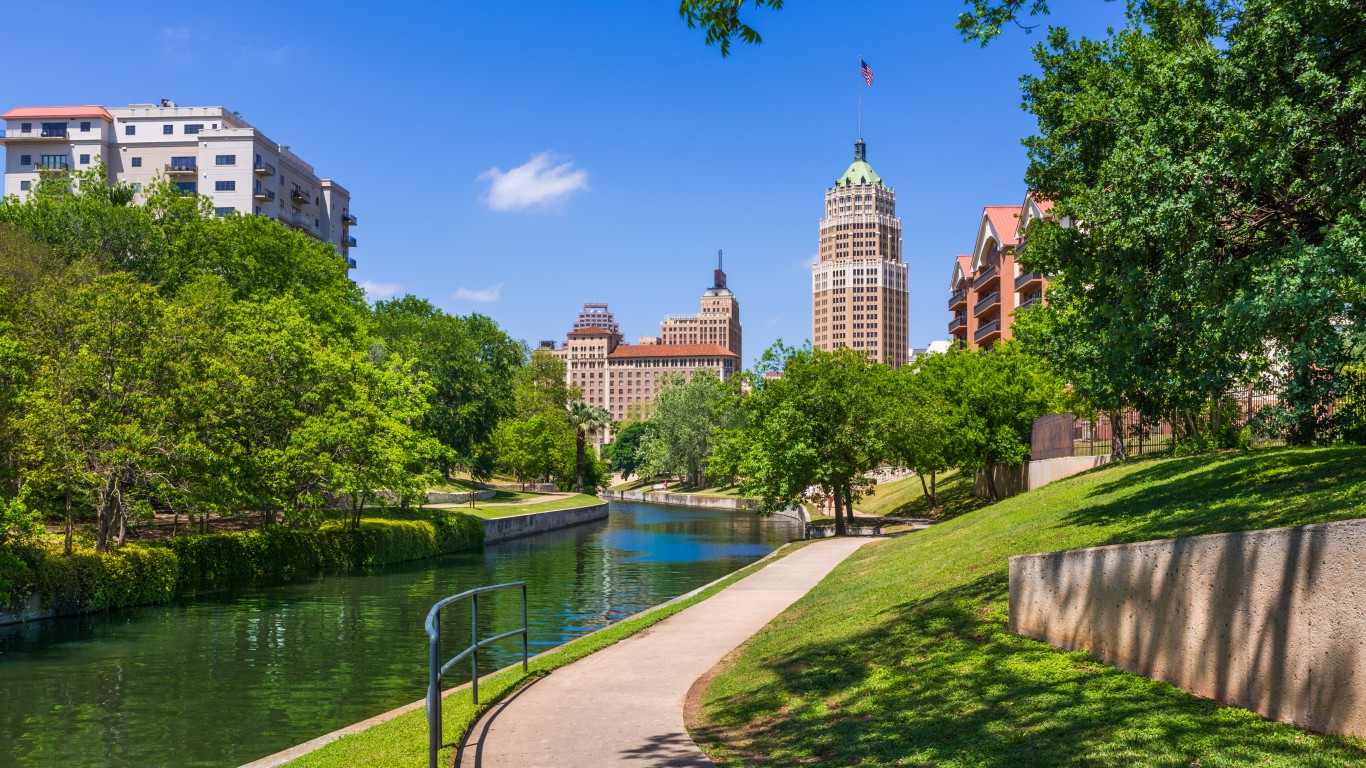
Access to park space is an important amenity for city dwellers, especially in the COVID era when many people want outdoor recreation. However, some cities do a much worse job than others at providing it.
To identify the major U.S. cities where people have the most limited access to park space, 24/7 Tempo reviewed The Trust for Public Land’s 2021 ParkServe dataset to determine the percentage of city residents living within a 10-minute walk from a park, the number of parks per 10,000 residents, total park acreage, and total city population. Population per acre of livable land area was also obtained from ParkServe.
The loser on the resulting list is Jacksonville, Florida, where only 35% of residents have walkable access to park space. That’s unfortunate for several reasons, not least because it’s the most populous city in the state, with close to a million residents. It is also the largest city by area in the contiguous United States, and one of the most abundant in parkland – more than 70,000 acres. People just don’t have easy access to it. (These are America’s largest city parks.)
Three cities are tied for the No. 2 spot, with 38% of residents having walkable access: Louisville, Kentucky; Oklahoma City; and Winston-Salem, North Carolina. Perhaps coincidentally, the first two have similar-sized populations and around 18,000 acres of parks apiece.
Click here to see the major US cities with the worst access to public parks
There are three Arizona cities on our list: Scottsdale, Gilbert, and Phoenix. Scottsdale is famous for its parklike golf courses, but only 40% of its residents have walkable access to parks. (If you like golf courses better anyway, consider the country’s 35 best cities to go golfing.)

23. El Paso, TX
> Walkable access, all residents: 60% (tie)
> Parks per 10,000 residents: 4.6 — #32 most
> Total park acres: 29,760 acres — #13 most
> People per acre of livable land area: 4.4 — #70 most
> Population: 702,073
[in-text-ad]
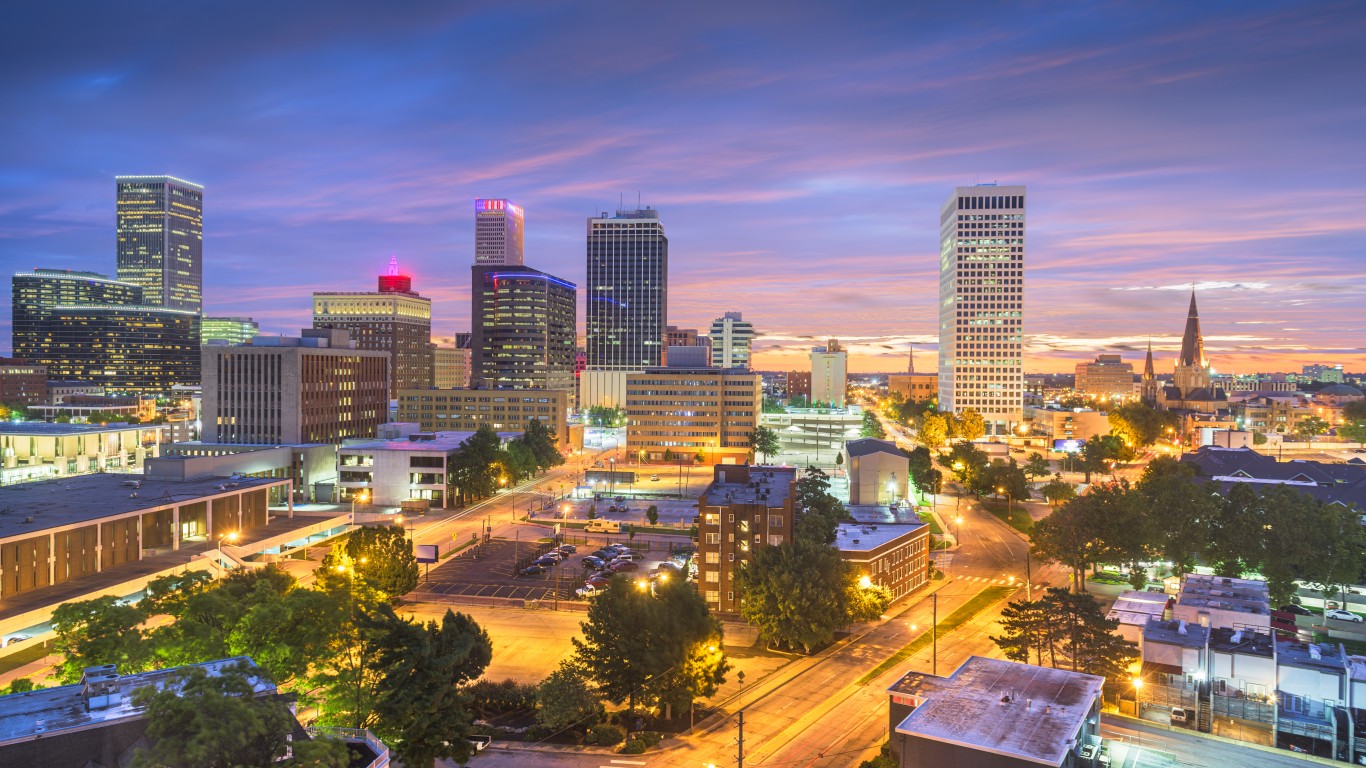
23. Tulsa, OK
> Walkable access, all residents: 60% (tie)
> Parks per 10,000 residents: 3.4 — #56 most
> Total park acres: 8,417 acres — #41 most
> People per acre of livable land area: 3.3 — #86 most
> Population: 405,327
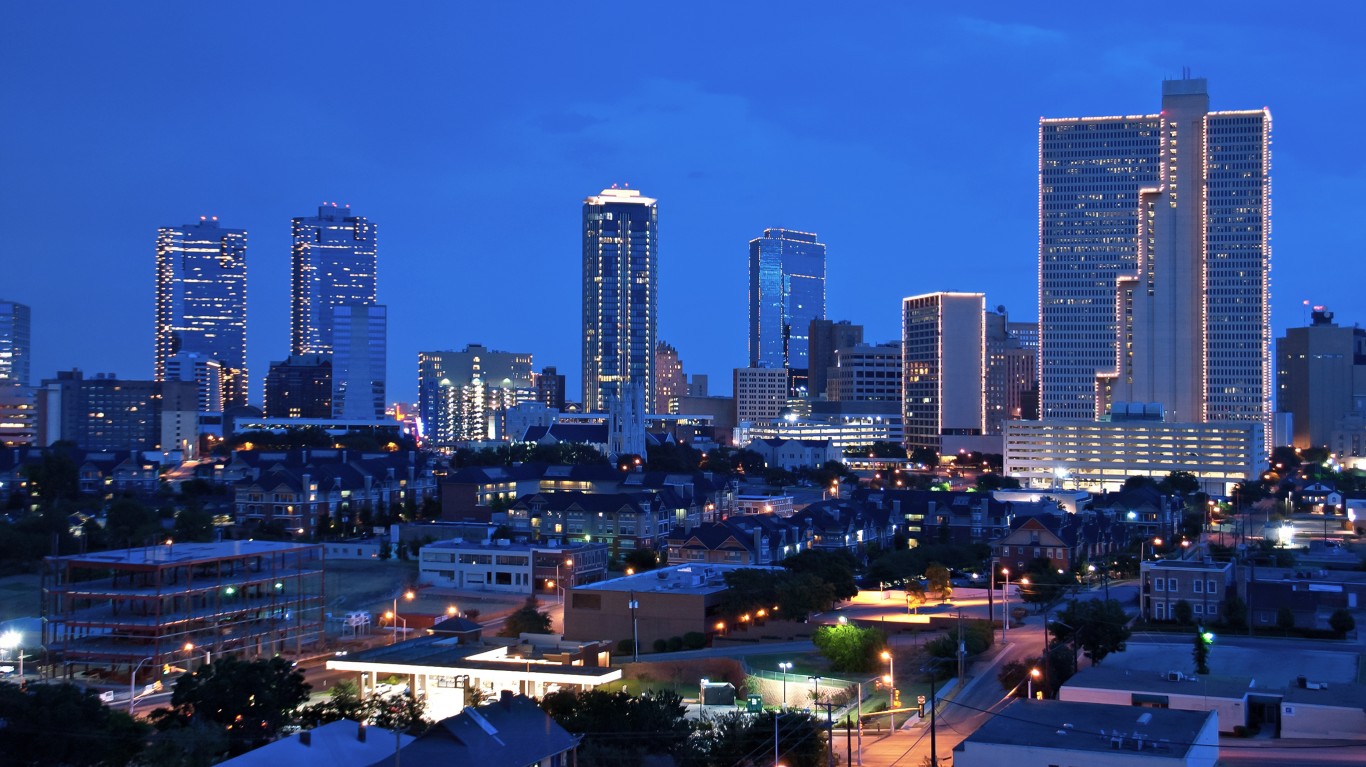
23. Fort Worth, TX
> Walkable access, all residents: 60% (tie)
> Parks per 10,000 residents: 3.2 — #62 most
> Total park acres: 12,337 acres — #28 most
> People per acre of livable land area: 4.3 — #71 most
> Population: 920,349
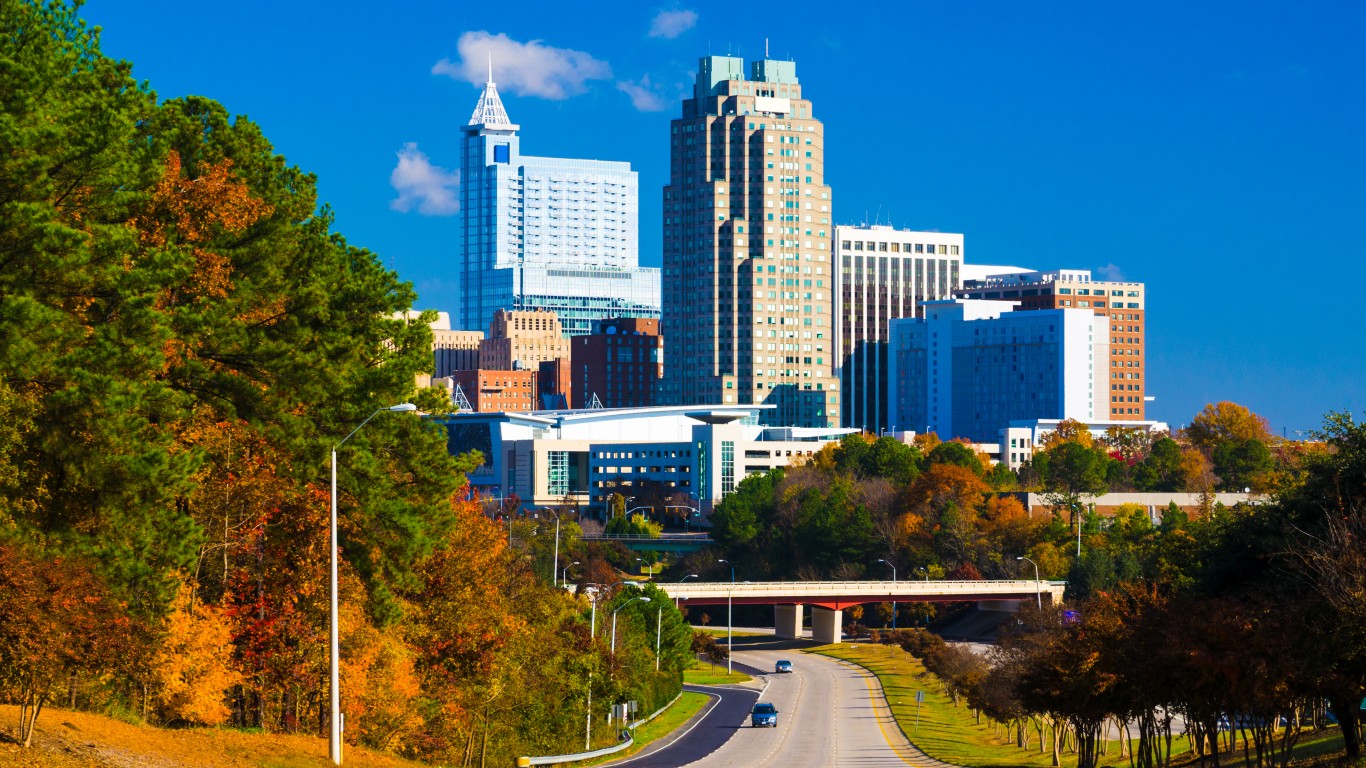
21. Raleigh, NC
> Walkable access, all residents: 57.4% (tie)
> Parks per 10,000 residents: 3.4 — #53 most
> Total park acres: 11,775 acres — #30 most
> People per acre of livable land area: 5.2 — #61 most
> Population: 477,476
[in-text-ad-2]
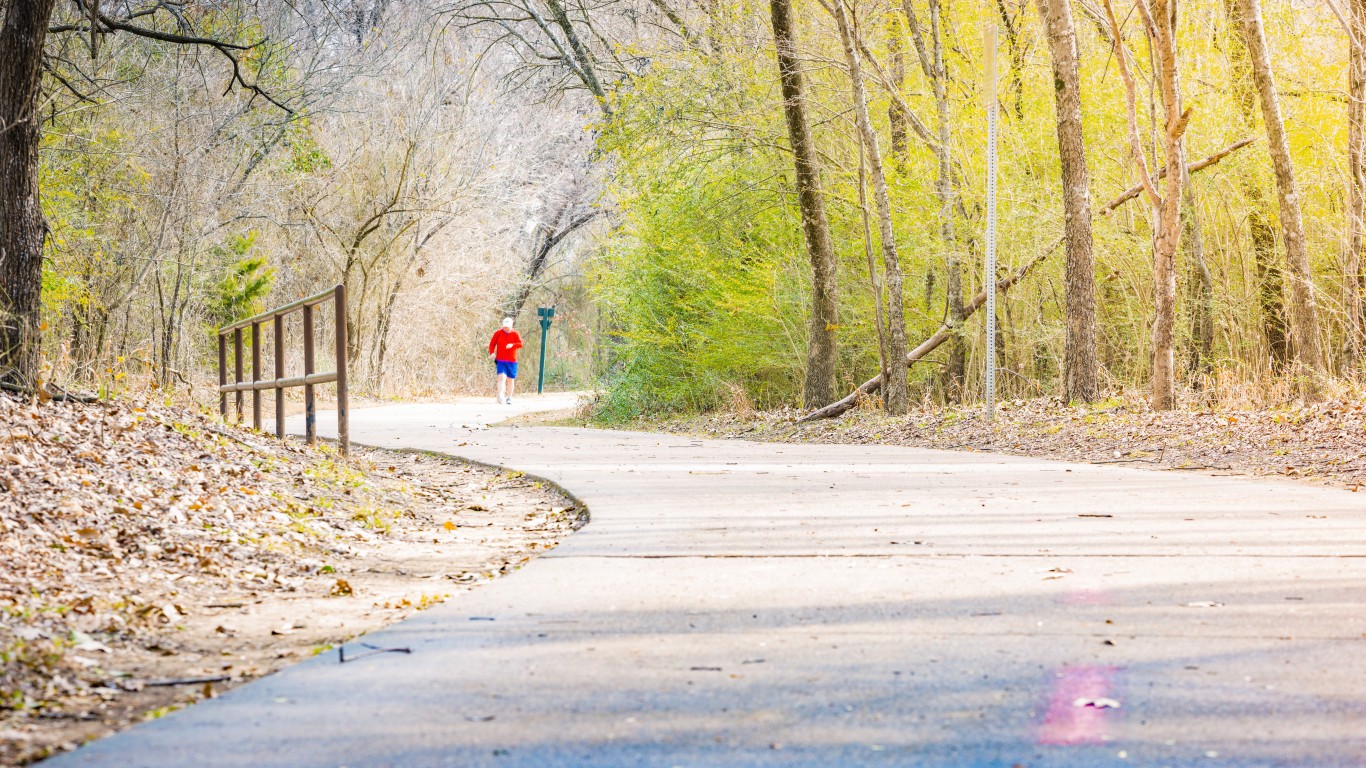
21. Arlington, TX
> Walkable access, all residents: 57.4% (tie)
> Parks per 10,000 residents: 2.5 — #78 most
> Total park acres: 4,714 acres — #60 most
> People per acre of livable land area: 6.5 — #44 most
> Population: 393,408
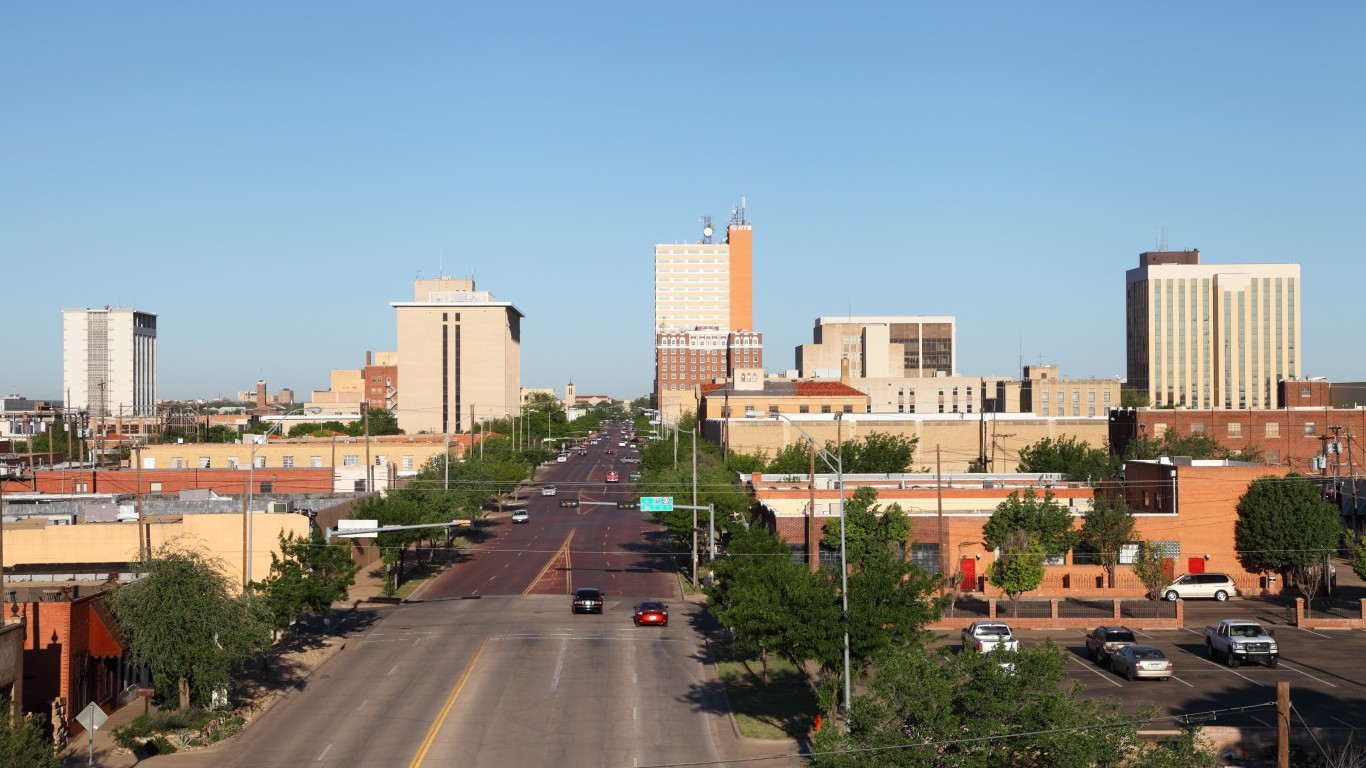
20. Lubbock, TX
> Walkable access, all residents: 56.1%
> Parks per 10,000 residents: 3.1 — #63 most
> Total park acres: 2,228 acres — #85 most
> People per acre of livable land area: 3.4 — #82 most
> Population: 264,518
[in-text-ad]
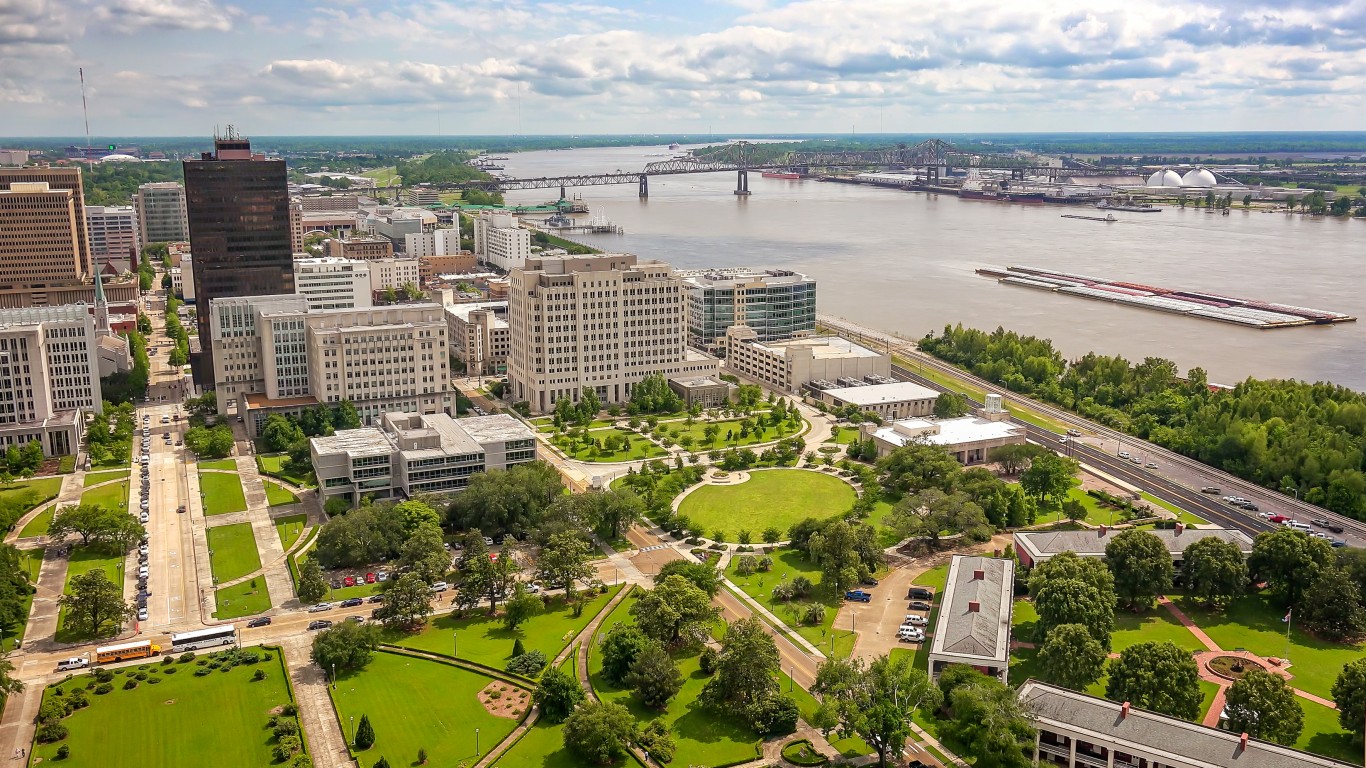
19. Baton Rouge, LA
> Walkable access, all residents: 55.1%
> Parks per 10,000 residents: 3.9 — #45 most
> Total park acres: 1,436 acres — #91 most
> People per acre of livable land area: 4.9 — #65 most
> Population: 235,833
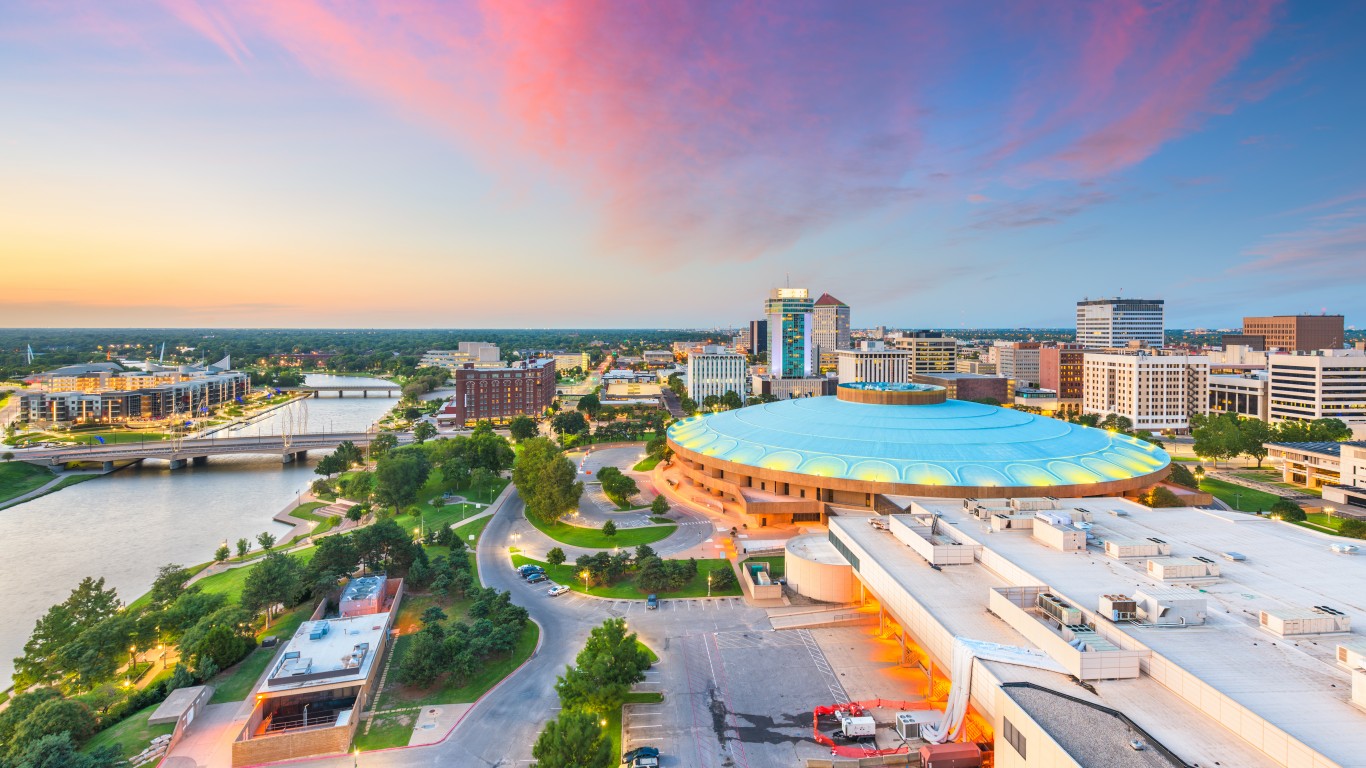
16. Wichita, KS
> Walkable access, all residents: 54% (tie)
> Parks per 10,000 residents: 3.6 — #49 most
> Total park acres: 5,002 acres — #56 most
> People per acre of livable land area: 4.0 — #77 most
> Population: 399,411
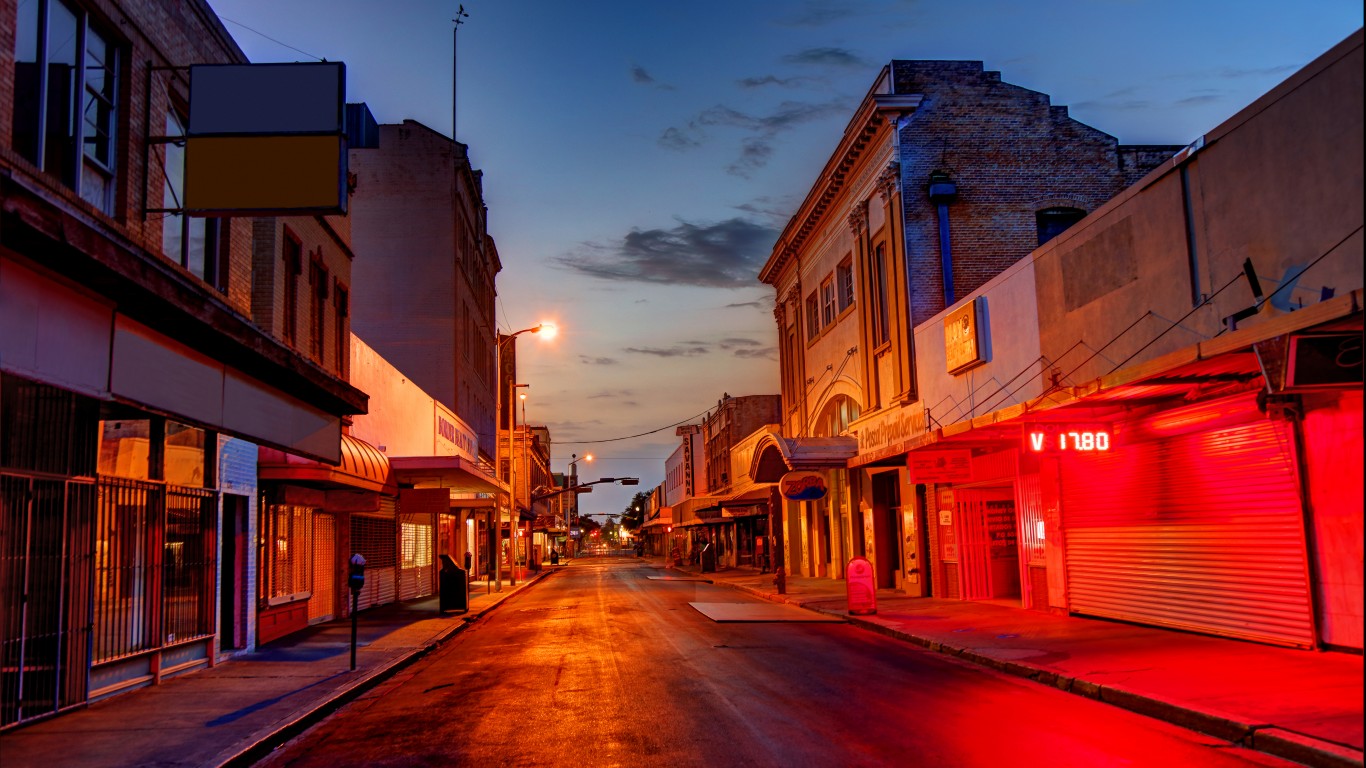
16. Laredo, TX
> Walkable access, all residents: 54% (tie)
> Parks per 10,000 residents: 3.4 — #58 most
> Total park acres: 2,432 acres — #83 most
> People per acre of livable land area: 4.9 — #66 most
> Population: 269,616
[in-text-ad-2]
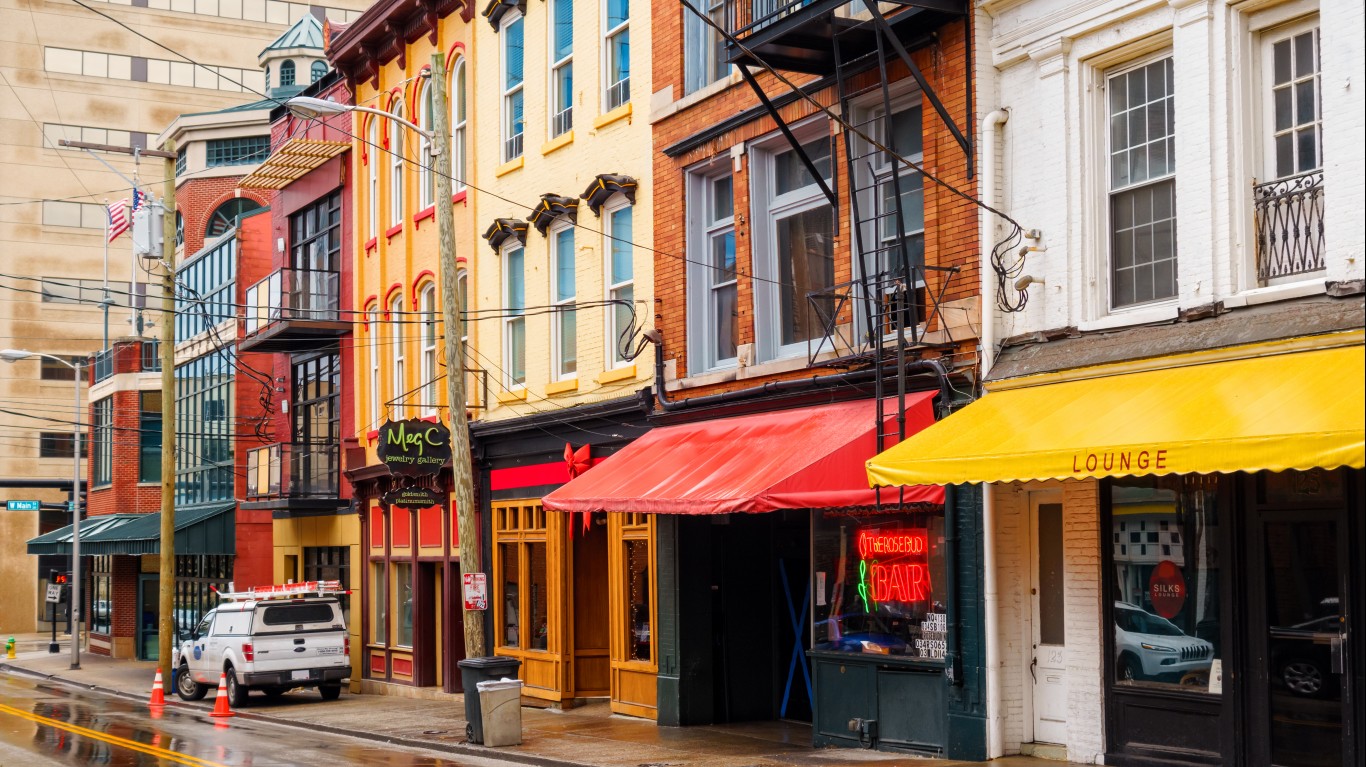
16. Lexington, KY
> Walkable access, all residents: 54% (tie)
> Parks per 10,000 residents: 3.2 — #61 most
> Total park acres: 4,420 acres — #64 most
> People per acre of livable land area: 1.8 — #96 most
> Population: 323,809
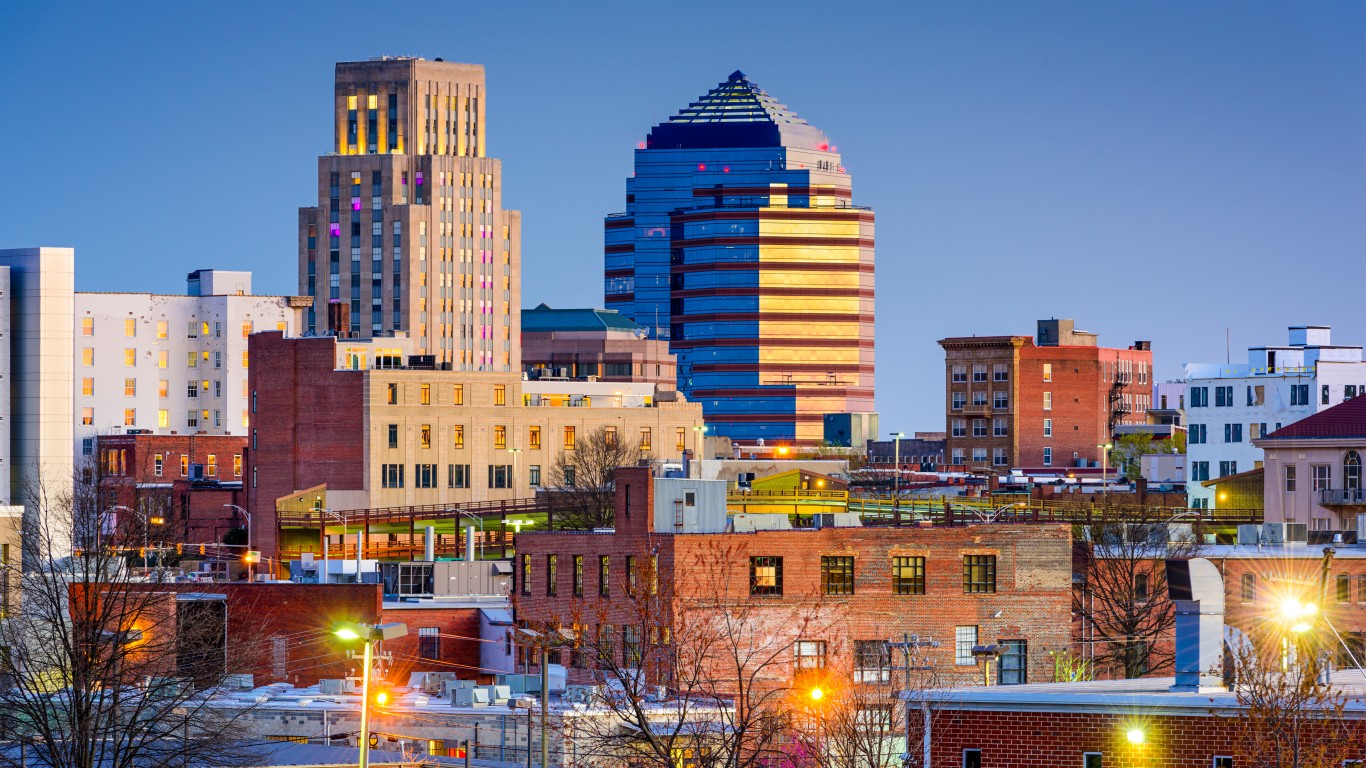
14. Durham, NC
> Walkable access, all residents: 51% (tie)
> Parks per 10,000 residents: 2.5 — #79 most
> Total park acres: 2,665 acres — #81 most
> People per acre of livable land area: 4.1 — #76 most
> Population: 279,277
[in-text-ad]
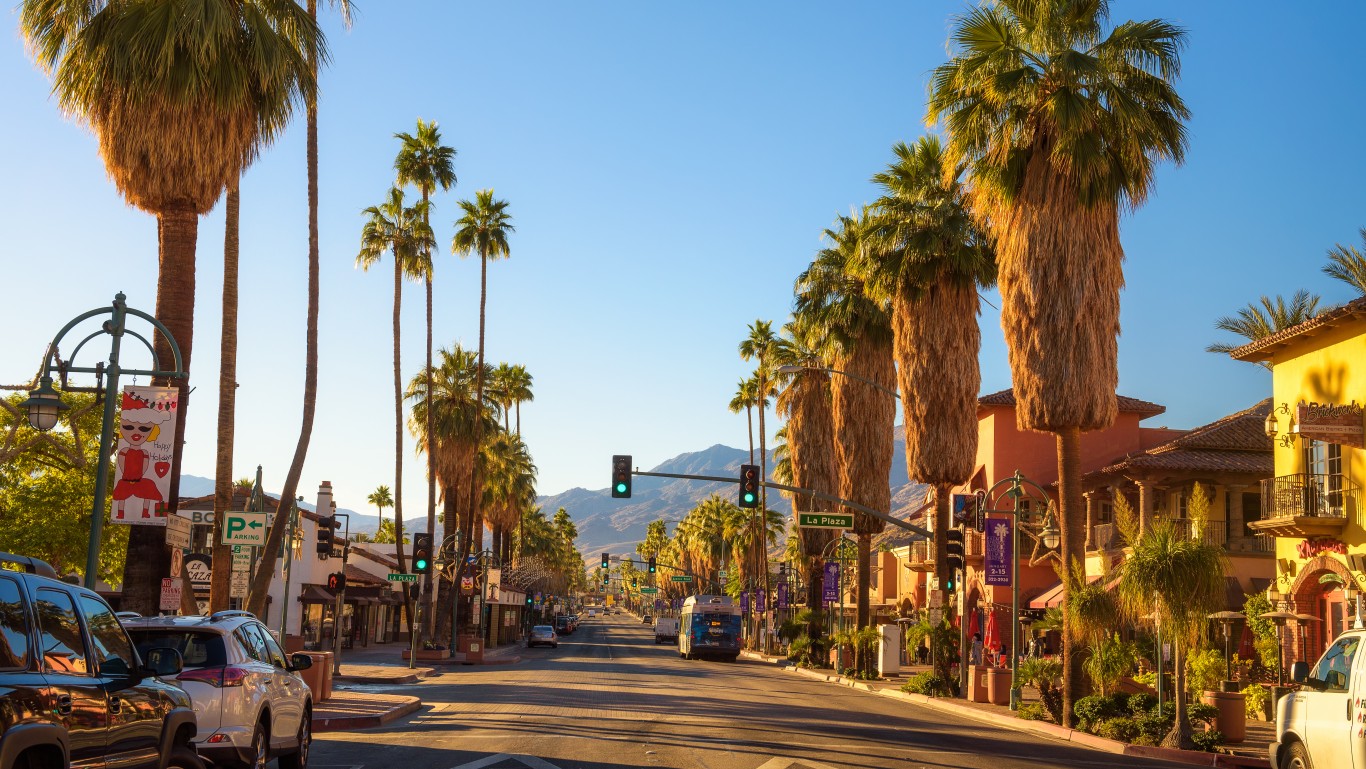
14. Riverside, CA
> Walkable access, all residents: 51% (tie)
> Parks per 10,000 residents: 2.4 — #81 most
> Total park acres: 3,483 acres — #72 most
> People per acre of livable land area: 6.2 — #50 most
> Population: 321,461
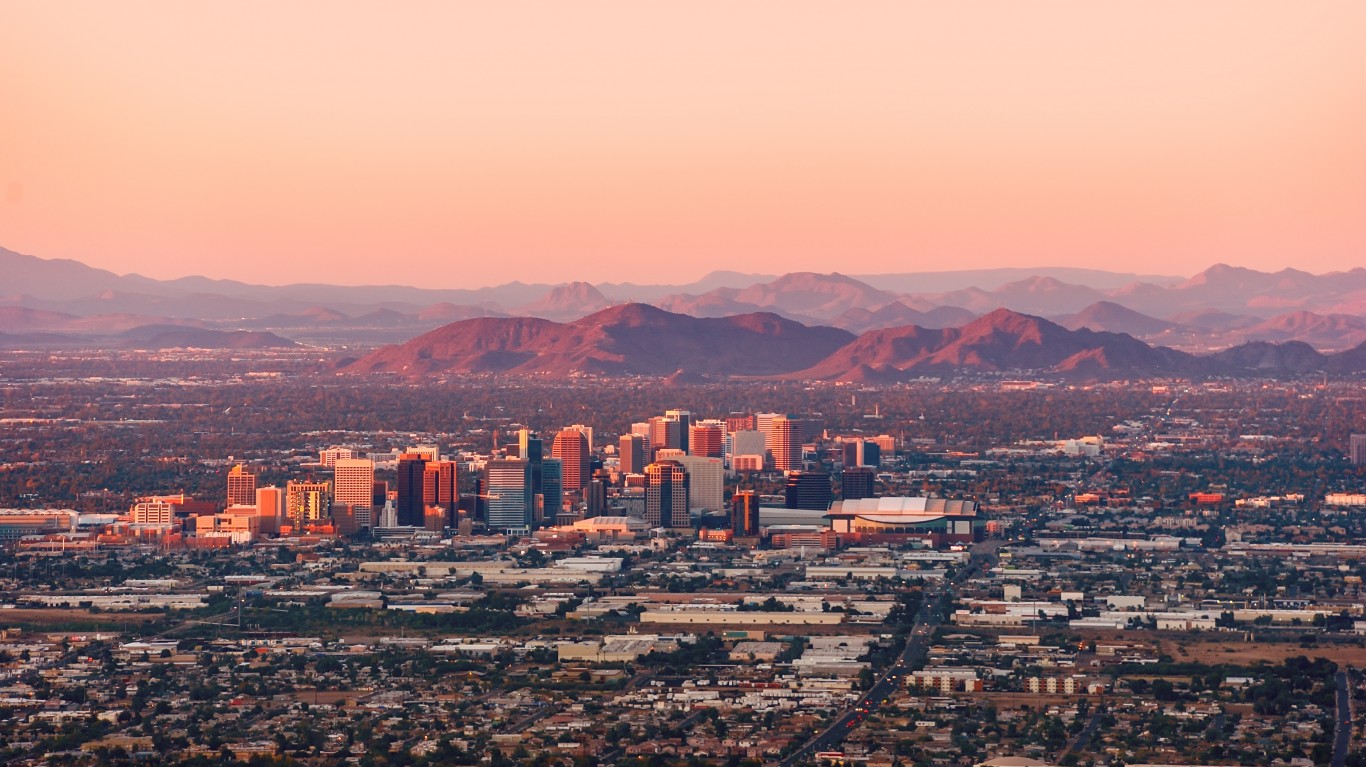
13. Phoenix, AZ
> Walkable access, all residents: 49%
> Parks per 10,000 residents: 1.4 — #95 most
> Total park acres: 47,040 acres — #4 most
> People per acre of livable land area: 5.0 — #63 most
> Population: 1,628,812
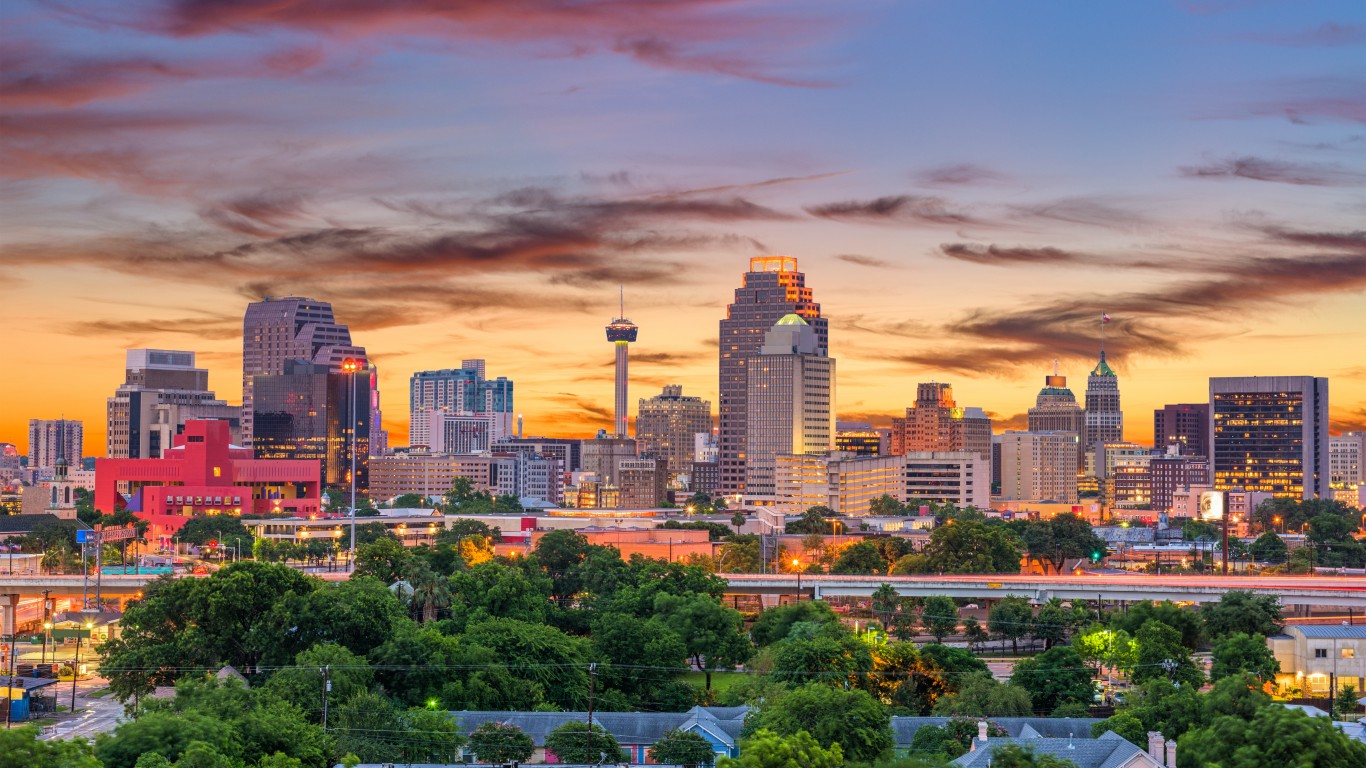
12. San Antonio, TX
> Walkable access, all residents: 48%
> Parks per 10,000 residents: 2.5 — #76 most
> Total park acres: 33,429 acres — #10 most
> People per acre of livable land area: 5.0 — #62 most
> Population: 1,458,346
[in-text-ad-2]

11. Bakersfield, CA
> Walkable access, all residents: 47%
> Parks per 10,000 residents: 2.0 — #90 most
> Total park acres: 5,364 acres — #52 most
> People per acre of livable land area: 4.3 — #72 most
> Population: 388,817
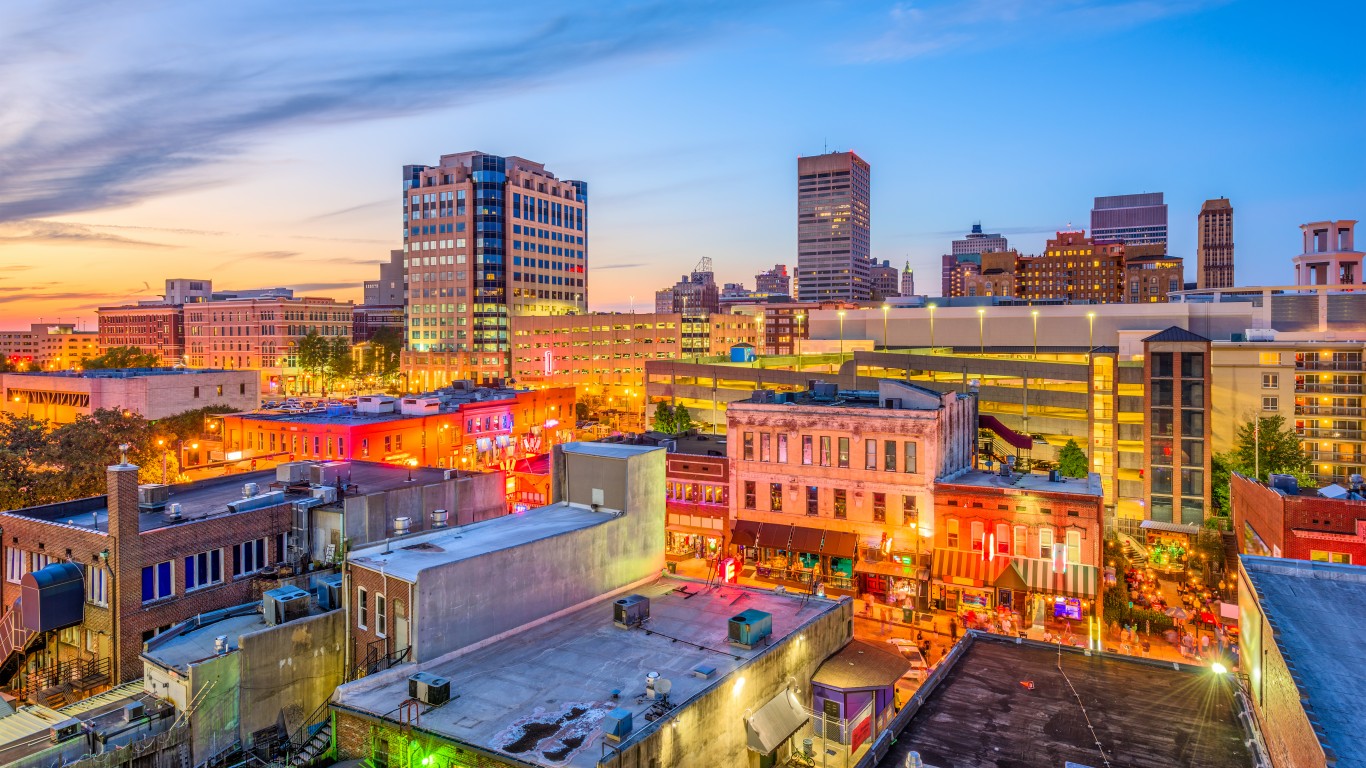
10. Memphis, TN
> Walkable access, all residents: 46%
> Parks per 10,000 residents: 3.0 — #66 most
> Total park acres: 9,704 acres — #36 most
> People per acre of livable land area: 3.3 — #84 most
> Population: 652,804
[in-text-ad]
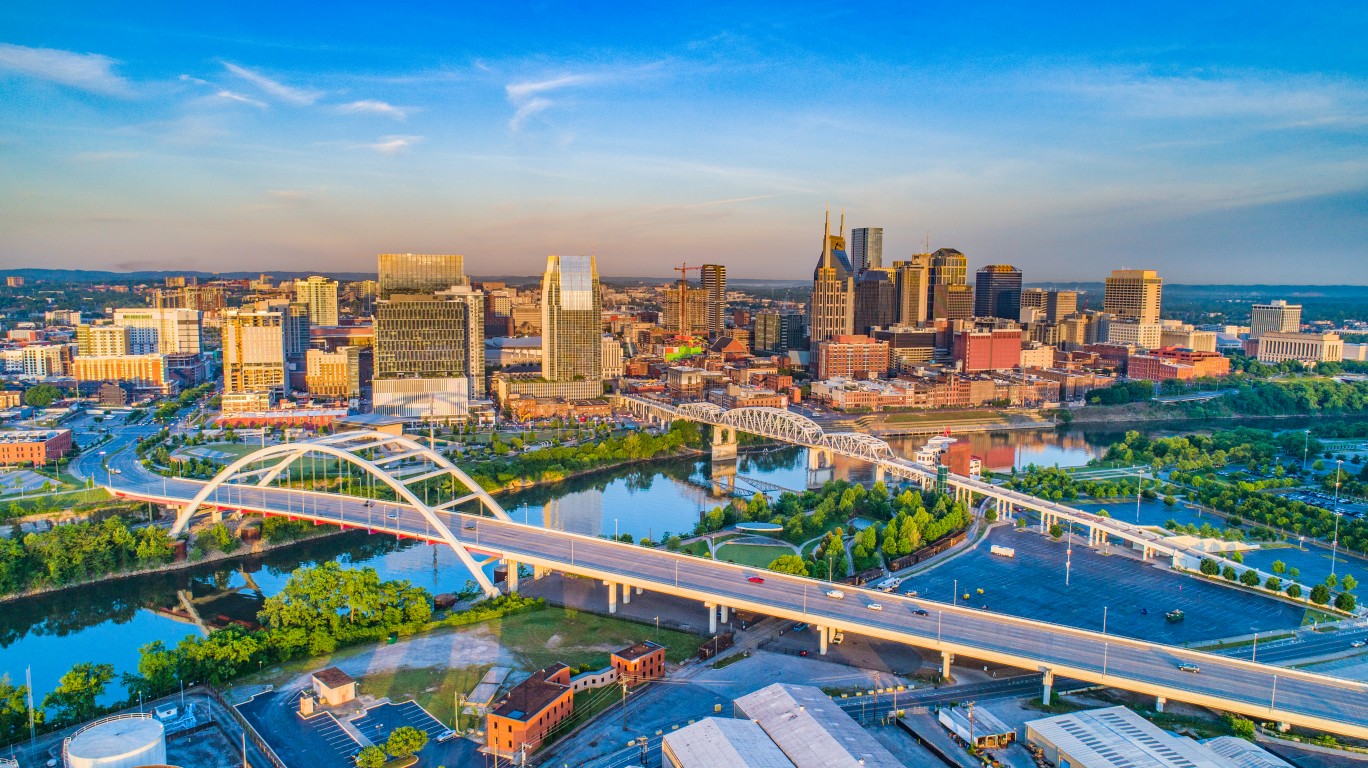
8. Nashville, TN
> Walkable access, all residents: 45% (tie)
> Parks per 10,000 residents: 4.4 — #37 most
> Total park acres: 25,711 acres — #16 most
> People per acre of livable land area: 2.2 — #93 most
> Population: 696,653
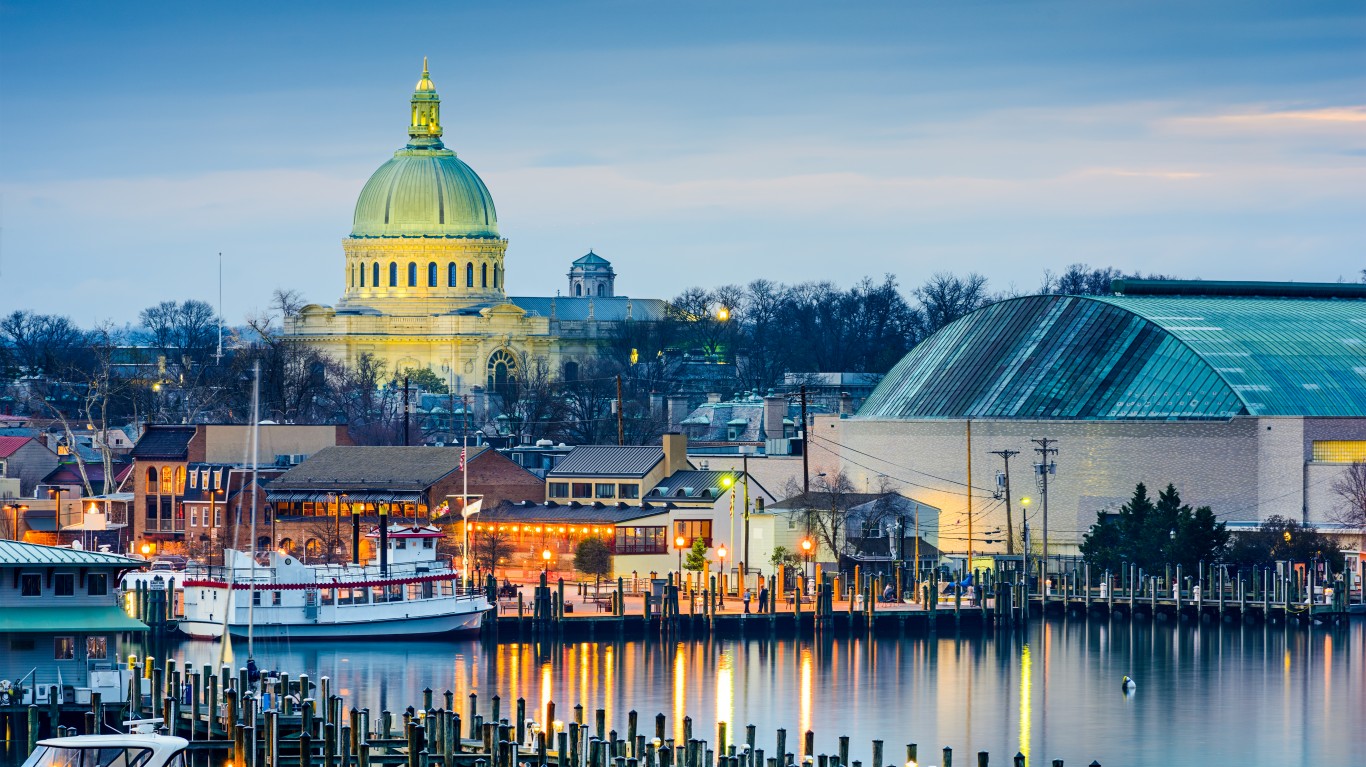
8. Chesapeake, VA
> Walkable access, all residents: 45% (tie)
> Parks per 10,000 residents: 3.2 — #60 most
> Total park acres: 88,352 acres — #2 most
> People per acre of livable land area: 1.2 — #98 most
> Population: 249,746
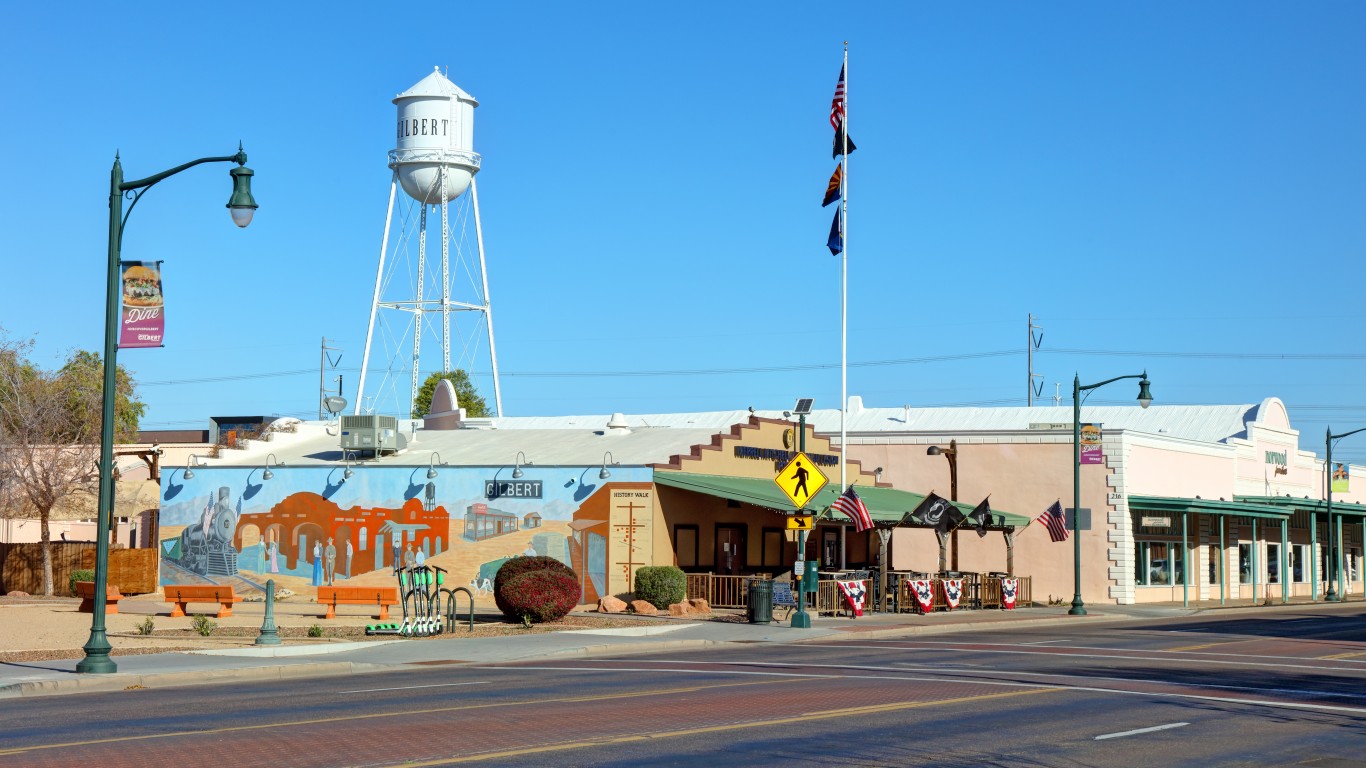
7. Gilbert, AZ
> Walkable access, all residents: 44%
> Parks per 10,000 residents: 1.5 — #94 most
> Total park acres: 991 acres — #96 most
> People per acre of livable land area: 6.2 — #49 most
> Population: 271,521
[in-text-ad-2]
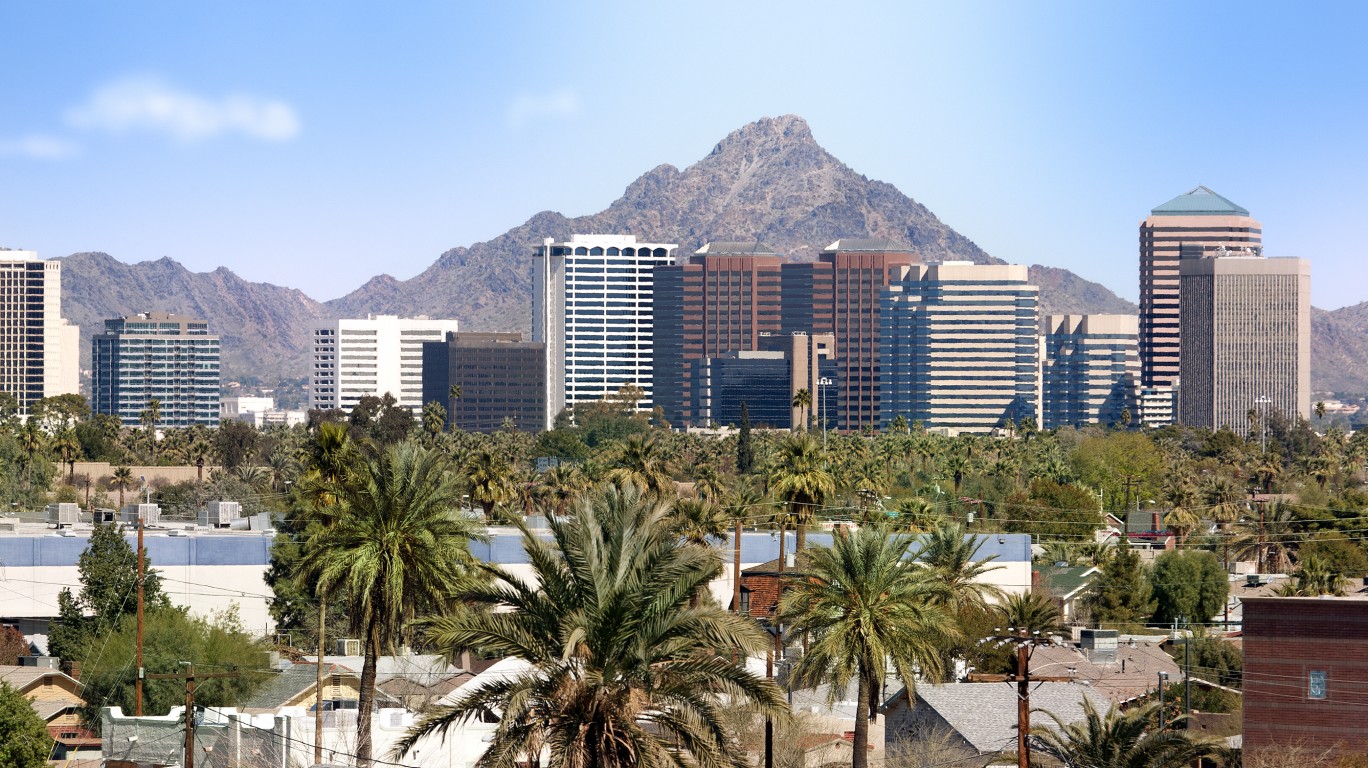
6. Scottsdale, AZ
> Walkable access, all residents: 40%
> Parks per 10,000 residents: 1.7 — #93 most
> Total park acres: 31,474 acres — #12 most
> People per acre of livable land area: 2.2 — #94 most
> Population: 252,383

5. Charlotte/Mecklenburg County, NC
> Walkable access, all residents: 39%
> Parks per 10,000 residents: 2.2 — #84 most
> Total park acres: 21,175 acres — #18 most
> People per acre of livable land area: 3.2 — #87 most
> Population: 1,115,617
[in-text-ad]
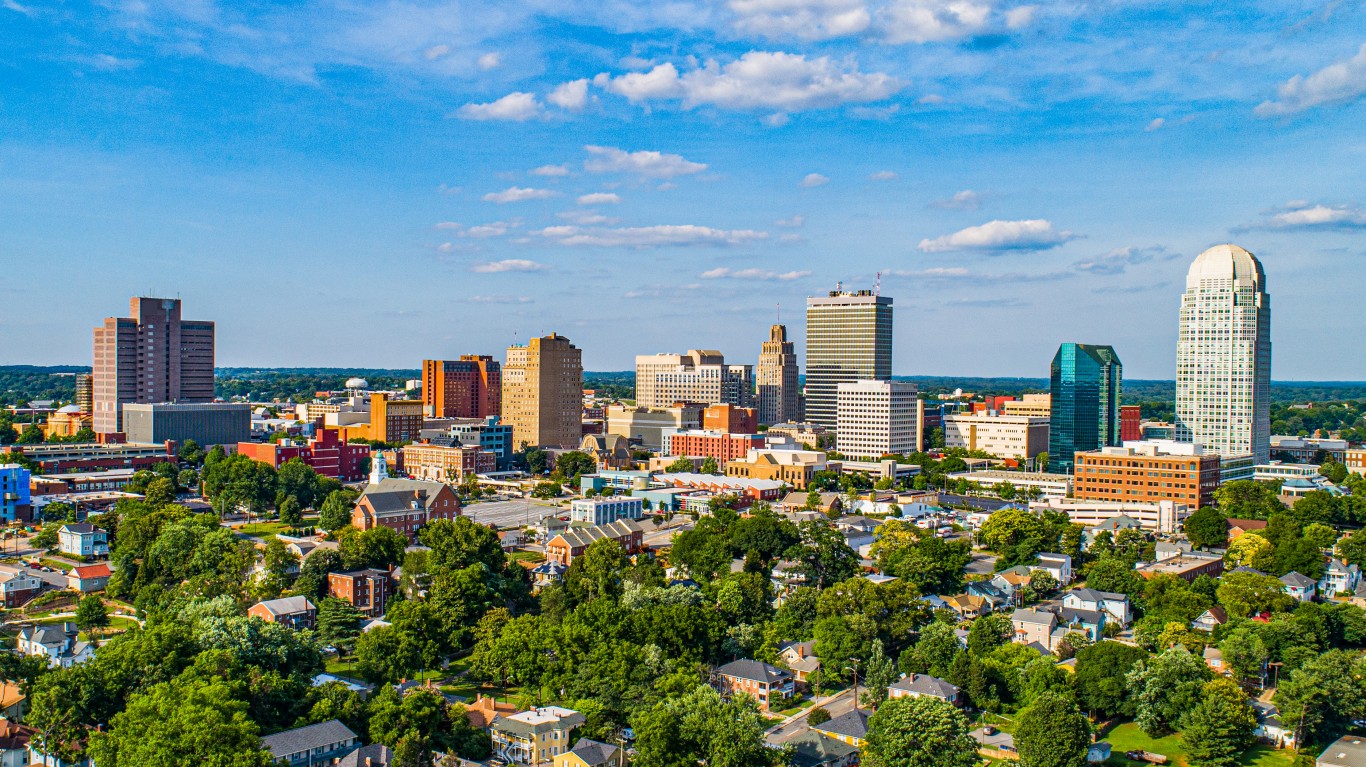
2. Winston-Salem, NC
> Walkable access, all residents: 38% (tie)
> Parks per 10,000 residents: 3.5 — #52 most
> Total park acres: 4,289 acres — #66 most
> People per acre of livable land area: 3.0 — #88 most
> Population: 252,154
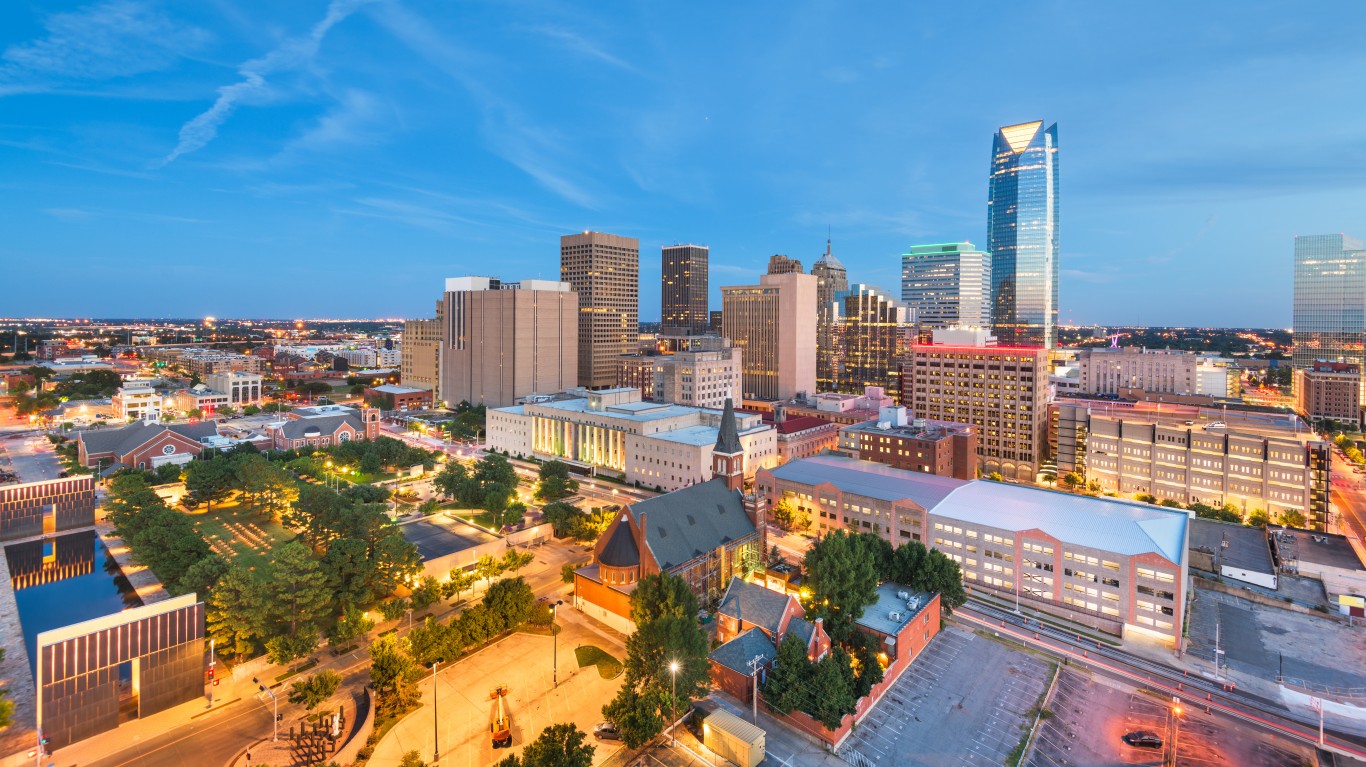
2. OK City, OK
> Walkable access, all residents: 38% (tie)
> Parks per 10,000 residents: 2.8 — #72 most
> Total park acres: 18,542 acres — #22 most
> People per acre of livable land area: 1.8 — #97 most
> Population: 670,553

2. Louisville, KY
> Walkable access, all residents: 38% (tie)
> Parks per 10,000 residents: 2.1 — #88 most
> Total park acres: 17,797 acres — #24 most
> People per acre of livable land area: 2.9 — #89 most
> Population: 627,770
[in-text-ad-2]
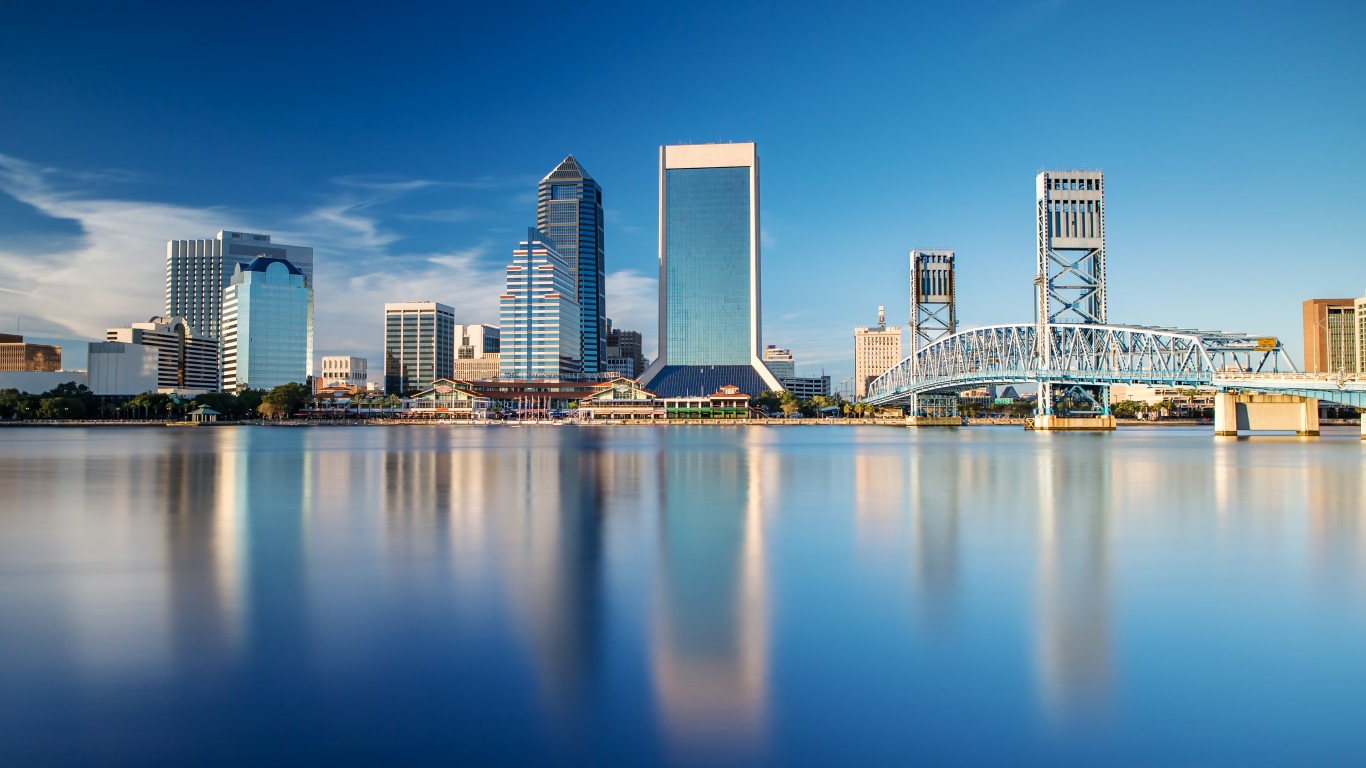
1. Jacksonville, FL
> Walkable access, all residents: 35%
> Parks per 10,000 residents: 4.5 — #35 most
> Total park acres: 70,602 acres — #3 most
> People per acre of livable land area: 2.0 — #95 most
> Population: 937,821
Take Charge of Your Retirement In Just A Few Minutes (Sponsor)
Retirement planning doesn’t have to feel overwhelming. The key is finding expert guidance—and SmartAsset’s simple quiz makes it easier than ever for you to connect with a vetted financial advisor.
Here’s how it works:
- Answer a Few Simple Questions. Tell us a bit about your goals and preferences—it only takes a few minutes!
- Get Matched with Vetted Advisors Our smart tool matches you with up to three pre-screened, vetted advisors who serve your area and are held to a fiduciary standard to act in your best interests. Click here to begin
- Choose Your Fit Review their profiles, schedule an introductory call (or meet in person), and select the advisor who feel is right for you.
Why wait? Start building the retirement you’ve always dreamed of. Click here to get started today!
Thank you for reading! Have some feedback for us?
Contact the 24/7 Wall St. editorial team.
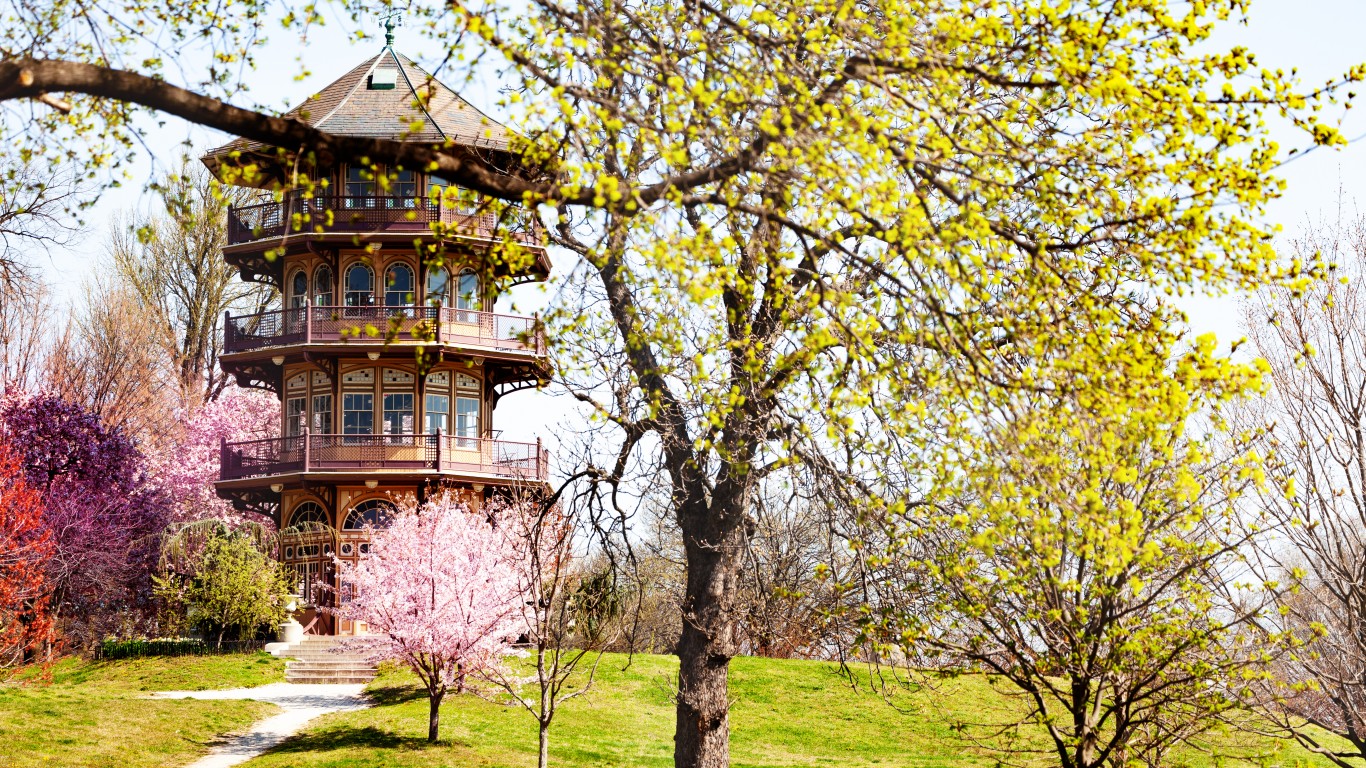 24/7 Wall St.
24/7 Wall St.